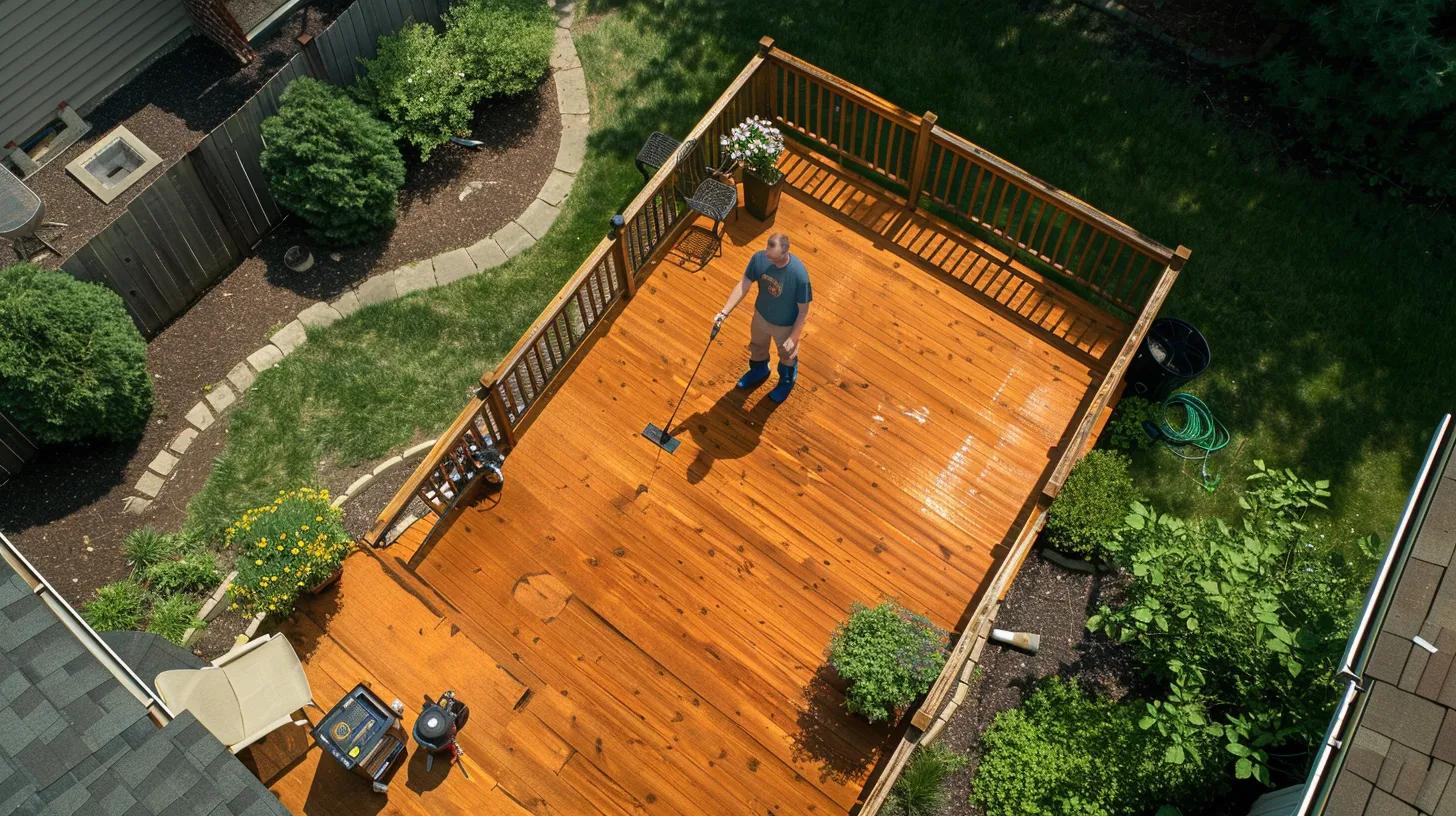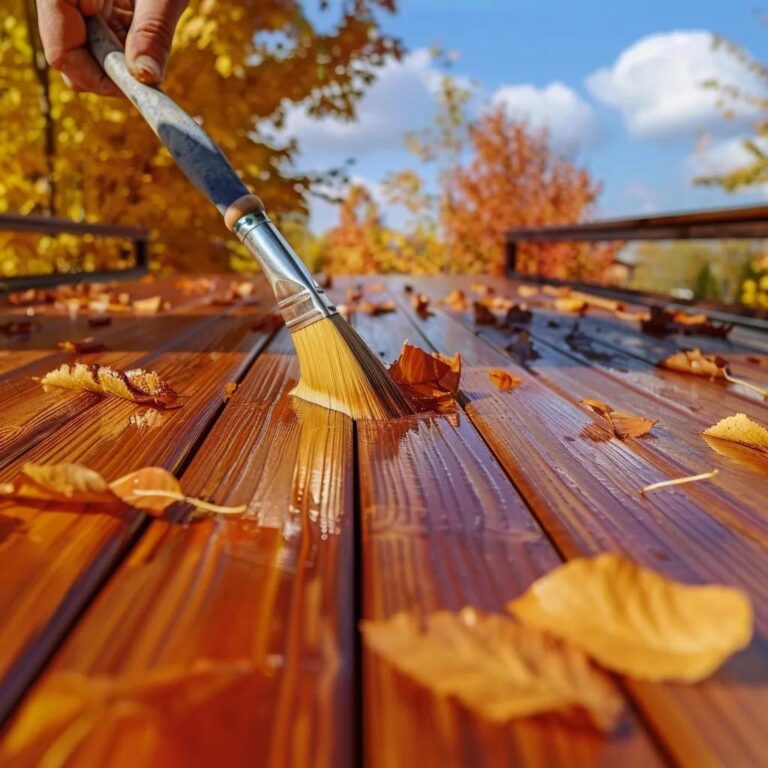Maintaining cedar siding is crucial to preserving the beauty, functionality, and longevity of homes in Valparaiso. The local climate—with its high humidity, fluctuating temperatures, and environmental pollutants—challenges natural building materials like cedar. Although cedar is inherently beautiful and resilient, it requires regular cleaning, proper protective treatments, and timely repairs to prevent premature aging and costly damage. This guide provides practical strategies for cleaning cedar siding while explaining how Valparaiso’s unique climate affects its durability, ensuring your home remains attractive and structurally sound.
Why Is Cedar Siding Maintenance Crucial for Homes in Valparaiso?
Regular maintenance is key to preserving both the visual appeal and structural integrity of cedar siding. Exposure to moisture, UV rays, and temperature changes can cause timber decay, discoloration, and rot if left unaddressed. Scheduled cleaning to remove mildew and algae, application of protective stains or sealants, and prompt repairs all work together to extend the siding’s lifespan and prevent expensive restoration projects. In Valparaiso, where high humidity and coastal pollutants accelerate deterioration, consistent maintenance not only protects your investment but also enhances the home’s
.
How Does the Valpo Climate Affect Cedar Siding Durability?
Valparaiso’s climate, marked by high humidity, frequent rainfall, and wide temperature swings, forces cedar to expand and contract. These repeated cycles can create micro-fractures that allow moisture and fungi to infiltrate the wood. Additionally, salty coastal air and pollution worsen the degradation of untreated cedar, leading to faster weathering compared to drier areas. Regular monitoring, cleaning, and the reapplication of protective coatings are essential to counter these environmental stresses. Understanding these climate effects is the first step in establishing a proactive maintenance strategy.
What Are the Risks of Neglecting Cedar Siding Care?
Neglecting cedar siding care can result in accelerated wear, structural damage, and diminished appearance. Without periodic cleaning and treatment, the siding may develop mold, mildew, and insect infestations that compromise its integrity. Moisture intrusion can lead to rot, while aesthetic issues like fading and algae buildup lower market value. Ultimately, neglect may trigger a cascade of costly repairs affecting not only the siding but also related components such as insulation and window frames, making regular upkeep a wise long-term investment.
How Does Proper Maintenance Extend Cedar Siding Lifespan?
Routine maintenance—through cleaning, inspections, and timely repairs—helps preserve the natural oils and protective barriers of cedar. Regular removal of mildew and dirt, followed by reapplication of quality stains or sealants, maintains the wood’s water resistance and UV protection. This proactive approach catches minor issues early, preventing them from developing into major problems. In turn, proper upkeep not only keeps the siding looking attractive but also minimizes renovation costs and preserves the home’s insulation properties and energy efficiency.
How to Clean Cedar Siding Effectively in Humid Climates Like Valparaiso?
Cleaning cedar siding in humid climates requires gentle methods that remove contaminants without damaging the wood fibers. Begin with a thorough inspection to identify areas with heavy buildup or damage. Use a low-pressure washing system combined with soft-bristle brushes and mild, eco-friendly cleaning agents to gently remove dirt, mildew, and algae. Avoid high-pressure washing, which can force moisture deeper into the wood and cause further issues. Regular cleaning not only restores the siding’s appearance but also prepares it for effective application of protective treatments.
What Are the Best Methods for Removing Mildew and Algae?
A gentle yet effective way to remove mildew and algae is to use a soft-bristle brush with a cleaning solution made from water and a mild detergent. For stubborn stains, a mix of white vinegar and water can break down the buildup without harming the wood. Occasionally, a small amount of oxygenated bleach (a biodegradable option) may be used to treat deeper stains, though chlorine bleach should be avoided since it strips natural oils. Always follow up with a thorough rinse using low pressure to ensure no
remain.
Which Cleaning Products Are Safe and Effective for Cedar Siding?
Choose cleaning products that are specifically formulated for wood siding. Eco-friendly detergents and products using natural ingredients, such as diluted dish soap or white vinegar, are ideal because they remove contaminants without damaging the cedar’s natural oils. Always perform a spot test before applying any cleaning solution over a large area. This careful approach helps ensure that cleaning enhances the siding’s appearance without compromising its long-term durability.
How Often Should You Clean Cedar Siding in Valpo’s Humid Environment?
In Valparaiso’s humid climate, cleaning cedar siding at least twice a year is recommended—ideally in late spring and early fall. For areas with persistent moisture or after heavy rains, an additional cleaning may be necessary. A quarterly cleaning schedule can help prevent buildup of mildew, algae, and dirt, ensuring that the siding remains protected and visually appealing. Early intervention in response to minor discoloration or buildup can prevent more significant damage over time.
What Are the Best Weather Protection Treatments for Cedar Siding in Valparaiso?
Applying high-quality stains, sealants, and finishes is essential to shield cedar siding from damaging UV rays, moisture, and temperature fluctuations. An exterior stain with UV inhibitors and water resistance penetrates deeply, replenishing natural oils and providing a robust defense against fading and decay. Sealants create a continuous water-repellent barrier that stops moisture from seeping into the wood while maintaining the cedar’s natural appearance. Reapplication should occur every three to five years, or as needed based on exposure, to ensure ongoing protection and longevity.
Which Stains Provide Optimal UV and Water Protection?
High-quality, penetrating stains—available in semi-transparent or solid forms—provide the best protection. Semi-transparent stains preserve the wood’s natural grain while delivering robust defense, whereas solid stains offer more intense coverage and protection for extreme conditions. Look for products specifically formulated for coastal or high-humidity environments to ensure that your cedar siding remains vibrant and resilient over time.
How Do Sealants Enhance Cedar Siding’s Resistance to Moisture?
Sealants form a continuous, water-repellent barrier over cedar siding, preventing moisture from reaching the wood. Advanced sealants, using polymer technology, offer flexibility that accommodates the natural expansion and contraction of cedar without cracking. Regular reapplication ensures that the barrier remains effective, thereby reducing risks of rot, mold, and warping caused by prolonged moisture exposure.
What Are the Recommended Finishes for Long-Lasting Protection?
For long-term protection, finishes that combine durability, flexibility, and resistance to UV and moisture are ideal. Clear water-repellent sealers, oil-based stains with UV inhibitors, and polyurethane coatings are commonly recommended choices. These finishes not only safeguard the siding against the elements but also enhance its natural beauty. Regular reapplication as per manufacturer guidelines helps maintain a consistent protective
that minimizes the need for frequent repairs.
When and How Should You Repair and Restore Cedar Siding to Maintain Its Beauty?
Timely repairs are essential to prevent minor issues from escalating into major structural problems. Regular inspections can spot early signs of damage—such as cracking, cupping, or discoloration—which indicate the need for repair. Simple repairs, like replacing damaged boards or resealing affected areas, can be performed by homeowners. However, extensive damage or widespread decay may require professional restoration to ensure that the repair work restores both function and aesthetic appeal while protecting the overall integrity of the preserve cedar siding.
What Are Common Signs That Cedar Siding Needs Repair?
Look for visible cracks, splitting, warping, or soft, spongy areas that may indicate rot. Discoloration or peeling paint and stain can also signal early fungal growth or water damage. These signs suggest that the siding is compromised and requires prompt repair to avoid further deterioration, which could impact nearby components and lead to more costly restoration efforts.
How to Perform Basic Cedar Siding Repairs Step-by-Step?
- Inspect the siding thoroughly and mark areas of damage.
- Clean the affected area with a mild detergent and soft brush to remove dirt and mildew.
- Use a wood filler or epoxy designed for exterior wood to mend minor cracks and gaps.
- For board replacement, remove the damaged section, measure and cut a matching replacement, and secure it with corrosion-resistant nails.
- Allow all repair materials to dry completely before refinishing the area with the same stain or sealant used on the rest of the siding.
Following these steps helps ensure that repairs are durable and blend seamlessly with the existing siding.
When Is Professional Restoration Recommended for Weathered Cedar Siding?
Professional restoration is advised when damage is extensive—such as deep rot, severe warping, or widespread decay—making DIY repairs inadequate. Professionals can address underlying issues like hidden moisture damage and ensure that restoration work matches the original appearance. Though more costly initially, expert intervention can extend the lifespan of the siding and prevent further deterioration, saving money in the long run.
How to Adapt Cedar Siding Care to the Unique Challenges of the Valparaiso Climate?
Valparaiso’s high humidity, frequent rains, and temperature fluctuations demand a tailored maintenance approach. Homeowners should adjust cleaning frequency, treatment schedules, and repair timing to match seasonal weather patterns. Creating a maintenance calendar that includes biannual or quarterly cleaning, periodic reapplication of protective finishes, and regular inspections after rainy periods is essential. This proactive scheduling helps ensure that the siding remains in optimal condition despite constant environmental challenges.
How Does High Humidity Impact Cedar Siding Maintenance?
High humidity accelerates the growth of mildew, algae, and mold on cedar siding. When moisture lingers, the wood fibers weaken, making the siding more susceptible to cracking and decay. Frequent cleaning and reapplication of protective treatments are necessary in high-humidity conditions to counter these effects. Homeowners should be vigilant in monitoring their siding during moist seasons to address issues before they worsen.
What Are the Effects of Temperature Fluctuations on Cedar Siding?
Temperature fluctuations cause cedar to expand and contract repeatedly, leading to micro-cracks that facilitate moisture penetration and pest infestations. These constant changes can degrade protective finishes over time, making it important to inspect and maintain the siding regularly. Addressing minor cracks early can prevent them from becoming significant structural issues.
What Is the Ideal Cedar Siding Maintenance Schedule for Valpo Homeowners?
A balanced maintenance schedule for Valparaiso includes: • Cleaning every three to four months, with extra attention after heavy rains. • Seasonal inspections to catch early signs of damage. • Reapplication of protective stains or sealants annually or biennially, depending on exposure.
This proactive routine helps prevent damage, preserves aesthetic appeal, and extends the lifespan of the siding.
What Are the Best Practices for Preventative Cedar Siding Maintenance in Valparaiso?
Preventative maintenance is key to avoiding expensive repairs. Regularly inspect the siding, clean it thoroughly with gentle, eco-friendly products, and apply protective treatments as needed. Consistent, scheduled maintenance minimizes the risks associated with humidity, UV exposure, and temperature fluctuations. A well-organized maintenance plan not only keeps your siding looking great but also reduces long-term repair costs.
How Can Regular Inspections Prevent Costly Repairs?
Routine inspections allow homeowners to detect minor issues, such as cracking or peeling, early on. Addressing these problems with prompt cleaning, touch-ups, or resealing can prevent them from escalating into major repairs. Keeping a maintenance record also helps in planning timely interventions, ultimately lowering overall repair expenses.
What Maintenance Tips Help Avoid Mildew and Algae Growth?
Key tips to prevent mildew and algae growth include: • Regular cleaning with low-pressure washing and eco-friendly solutions. • Applying mildew-resistant stains and sealants during maintenance routines. • Ensuring proper ventilation by trimming nearby vegetation and keeping gaps between the siding and adjacent structures. • Scheduling cleaning sessions right after heavy rain to remove lingering moisture. cleaning and sealing
These practices help keep your cedar siding clean and free from harmful biological buildup.
How to Choose the Right Contractor for Cedar Siding Care in Valpo?
When hiring a contractor, look for professionals with proven experience in cedar siding maintenance and restoration, particularly under Valparaiso’s climatic conditions. Verify their portfolio, request references, and confirm certifications and licenses. A knowledgeable contractor will provide a customized maintenance plan, clear pricing, and reliable services that ensure your siding remains durable and attractive.
What Frequently Asked Questions Do Valparaiso Homeowners Have About Cedar Siding Care?
Valparaiso homeowners often seek guidance on maintaining cedar siding. Below are some frequently asked questions with concise answers to help plan an effective maintenance strategy.
How Often Should Cedar Siding Be Cleaned in Humid Climates?
Cedar siding in humid climates should be cleaned at least twice a year, with additional cleanings after heavy rain. Some homeowners may opt for quarterly cleaning during particularly damp months to prevent mildew and algae buildup, ensuring the siding remains in excellent condition year-round.
What Is the Best Stain for Cedar Siding in Valparaiso?
The best stain offers high UV protection and water resistance. Exterior-grade oil-based or semi-transparent stains with polymer additives work well in coastal and humid conditions, keeping the cedar siding vibrant and protected against environmental stressors. Regular reapplication is key to maintaining its natural beauty.
How Much Does Cedar Siding Maintenance Typically Cost?
Maintenance costs vary with home size and service extent but generally range from $500 to $2,000 annually for basic cleaning, inspections, and minor repairs. Extensive restorations and professional treatments may cost more; however, regular maintenance helps control long-term expenses by preventing major damage.
Table: Cedar Siding Maintenance Overview
Below is a summary table outlining key maintenance aspects for Valparaiso homeowners:
Before applying any treatment, always assess the current condition of the siding to prioritize necessary interventions.
Frequently Asked Questions
Q: What routine cleaning methods are most effective for cedar siding? A: Use a soft-bristle brush with a mild detergent solution and low-pressure rinsing to gently remove grime, mildew, and algae without forcing water deeper into the wood. To further enhance the longevity of your cedar siding, it is recommended to apply a wood preservative annually.
Q: How can homeowners extend the life of their cedar siding through maintenance? A: Implement a regular maintenance schedule that includes thorough cleaning, routine inspections, timely repairs, and annual reapplication of protective stains and sealants to minimize damage and preserve both appearance and structure.
Q: What factors dictate how often cedar siding should be cleaned in Valpo? A: Environmental factors such as high humidity, rainfall, and the buildup of algae and mildew dictate cleaning frequency; in Valparaiso, cleaning every three to four months is typically advisable.
Q: Are there eco-friendly cleaning products suitable for cedar siding maintenance? A: Yes, choose biodegradable cleaning solutions made from natural ingredients like diluted vinegar or plant-based detergents that effectively remove mildew without harming the wood.
Q: What signs indicate that professional restoration is required for cedar siding? A: Extensive decay, deep cracks, severe warping, or signs that DIY repairs have failed indicate that professional restoration is needed to thoroughly address both cosmetic and structural issues.
Final Thoughts
Regular cedar siding maintenance is essential for safeguarding the natural beauty and structural integrity of your home in Valparaiso. A balanced routine of cleaning, protective treatments, and timely repairs not only keeps the siding visually appealing but also reduces long-term repair costs and enhances property value. By adapting maintenance strategies to the local climate, Valpo homeowners can ensure their cedar exteriors remain resilient against moisture, UV exposure, and temperature fluctuations for years to come.





